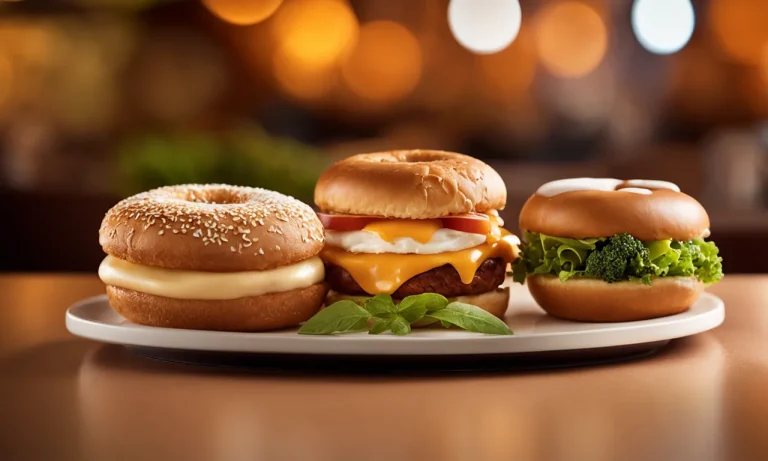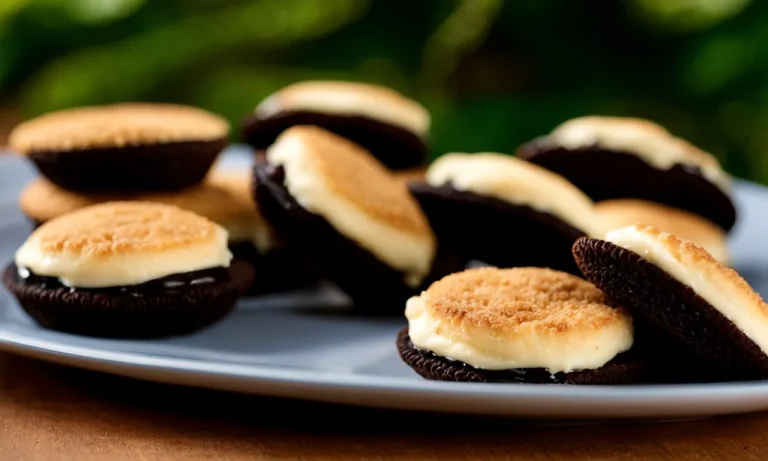Are Hash Browns Vegan? The Surprising Truth
With their crispy, golden exterior and fluffy interior, hash browns are a breakfast staple loved by many. But if you follow a vegan diet, can you still enjoy this classic side dish? The short answer is yes – hash browns can be vegan. However, it depends on how they are prepared.
In this comprehensive guide, we’ll cover everything you need to know to determine if hash browns fit into a vegan lifestyle. We’ll look at the typical ingredients in hash browns, examine how they are cooked, and provide tips for finding vegan hash browns both when dining out and when cooking at home.
What Ingredients Are Usually in Hash Browns?
Hash browns are a popular breakfast dish made from grated or shredded potatoes that are typically fried until crispy. While the basic recipe for hash browns is quite simple, there are a few key ingredients that are commonly used to enhance their flavor and texture.
Potatoes
At the heart of any good hash brown recipe are, of course, the potatoes. Russet potatoes are often the preferred choice due to their high starch content, which helps create a crispy exterior while maintaining a fluffy interior.
These potatoes are typically peeled and then grated or shredded before being cooked.
Oil or Fat for Frying
To achieve that delicious golden-brown crust, hash browns require the use of oil or fat for frying. Common options include vegetable oil, canola oil, or clarified butter. The choice of fat can impact the flavor profile of the hash browns, so experimentation with different options can yield tasty results.
Herbs and Spices
While the base ingredients of hash browns are relatively simple, many cooks like to add herbs and spices to enhance the flavor. Popular choices include salt, pepper, garlic powder, paprika, and onion powder. These seasonings can be adjusted to suit personal preferences and taste.
Binders
Some recipes may call for the addition of binders to help hold the hash browns together. Common binders include flour, cornstarch, or eggs. These ingredients help create a cohesive texture and prevent the hash browns from falling apart during cooking.
It’s worth noting that while these are the typical ingredients found in most hash brown recipes, variations exist, and some creative cooks may add additional ingredients to personalize their dish. Ultimately, the ingredients used in hash browns can vary depending on the recipe or personal preference.
How Are Hash Browns Typically Cooked?
Hash browns are a popular breakfast food made from grated or shredded potatoes. They are known for their crispy exterior and soft, fluffy interior. While there are various ways to cook hash browns, the most common methods include pan-frying, deep-frying, and baking.
Pan-Fried
Pan-fried hash browns are a classic preparation method. To make pan-fried hash browns, the grated or shredded potatoes are typically seasoned with salt and pepper, and then cooked in a skillet with a generous amount of oil or butter.
The heat from the skillet helps create a crispy crust on the outside, while the inside remains tender. This method allows for customization, as additional ingredients like onions, peppers, or cheese can be added for extra flavor.
Deep-Fried
Deep-fried hash browns take the crispy factor to another level. In this method, the grated or shredded potatoes are formed into patties and then submerged in hot oil. The high temperature of the oil quickly cooks the potatoes, resulting in a crunchy texture throughout.
Deep-fried hash browns are often served as a side dish or as a component in hearty breakfast plates.
Baked
Baking hash browns is a healthier alternative to frying. To bake hash browns, the grated or shredded potatoes are mixed with some oil or butter, formed into patties or placed in a baking dish, and then baked in the oven until golden brown.
This method requires less oil and still produces a crispy exterior, although the texture may not be as crunchy as pan-fried or deep-fried hash browns.
When it comes to cooking hash browns, each method offers its own unique texture and flavor profile. Ultimately, the choice of cooking method depends on personal preference and dietary considerations.
What Makes Hash Browns Non-Vegan?
When it comes to determining whether hash browns are vegan or not, there are a few key factors to consider. Let’s take a closer look at what makes hash browns non-vegan:
Animal-Based Fats
One of the main reasons why hash browns may not be vegan-friendly is the use of animal-based fats in their preparation. Traditional recipes often call for the use of butter or lard to achieve that crispy and flavorful texture.
While some restaurants and manufacturers may opt for plant-based oils, it’s important to check the ingredients or ask about the cooking methods to ensure they are truly vegan.
Milk and Eggs as Binders
Another factor that can make hash browns non-vegan is the addition of milk and eggs as binders. Some recipes call for the use of milk to help bind the grated potatoes together, while others may include eggs for the same purpose.
These ingredients can be problematic for those following a vegan diet, as they are derived from animals. However, there are vegan alternatives available, such as using plant-based milk or vegan egg substitutes.
Beef Flavoring
Surprisingly, some commercially prepared hash browns may contain beef flavoring or beef extracts. This can be a hidden source of non-vegan ingredients, as beef flavoring is often used to enhance the savory taste of the dish.
It’s important to carefully read the packaging or inquire about the ingredients used to ensure that the hash browns you consume are indeed vegan-friendly.
Tips for Finding Vegan Hash Browns
Hash browns are a beloved breakfast staple, but are they vegan? The answer may surprise you. While hash browns are typically made from shredded potatoes, some varieties may contain animal-based ingredients or be cooked in animal fats. Here are some tips to help you find vegan hash browns:
1. Check Ingredients at Restaurants
When dining out, it’s essential to inquire about the ingredients used in the hash browns. Some restaurants may add dairy products, such as milk or butter, to enhance the flavor. Don’t hesitate to ask your server about the preparation method and potential animal-derived ingredients.
You can also request a customized vegan version if necessary.
2. Look for Vegan Labels on Packaged Hash Browns
When shopping for packaged hash browns at the grocery store, look for products with a clear vegan label. Many companies now cater to the growing demand for vegan options and label their products accordingly.
These labels make it easier for vegans to identify suitable products without having to scrutinize every ingredient on the package.
3. Make Your Own at Home
Making your own hash browns at home ensures complete control over the ingredients. Start by shredding potatoes and soaking them in cold water to remove excess starch. Then, drain and pat them dry before frying them in a vegan-friendly oil, such as olive or coconut oil.
Add your favorite herbs and spices for extra flavor. Making hash browns from scratch allows you to customize them to your liking while ensuring they are vegan.
Remember, being vegan goes beyond just avoiding animal products in your diet. It extends to all aspects of your lifestyle, including the food choices you make. By following these tips, you can enjoy delicious vegan hash browns without compromising your dietary preferences.
Conclusion
With a little care and knowledge of common ingredients, it’s easy to enjoy vegan hash browns, whether dining out or cooking at home. Opt for veggie-based oils when frying and avoid animal-based binders to keep hash browns animal-free.
Check labels carefully on store-bought varieties or whip up a batch of cruelty-free spuds yourself. However you like your hash browns cooked, you can still enjoy this breakfast favorite as part of a vegan lifestyle.







